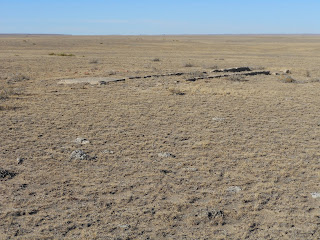Passing
Time
For
eons, Man has tried to control his environment, let nature he was in
control. One of the hardest aspects to
control was time, it cannot be saved, nor can it be predicted let alone
stopped. Time marches at its own
pace. Some of the earlier attempts at control were
sundials, very nice ornate ones, to a simple stick in the dirt. All these tools did was measure the passage
of time.
For
centuries, writers have created all types of devices to travel in time and slow
down time to the point of stopping time.
The library is full of books about time machines. The flights of fancy of the writer knows no
limits when it comes to manipulating time.
Over the centuries man has invented machines to measure time. Simple devices such as an hour glass to a
more sophisticated devices called clocks.
Today there are atomic clocks that measure time in milli-seconds.
All
this is based on fast our planet rotates, which is erratic. So man made a thing called leap day to
balance out time and create the illusion that they can control time.
Towns
built clock towers so all of the townspeople could see the time. Others had town criers that walked about the
time shouting out the time. An
artificial regimen for doing jobs was created by these ways of measuring
time. Then as smaller clocks were made,
one could have their own personal timepiece in their home. With the addition of the alarm, the time
machine began to control people lives, rather than people controlling
time.
Soon
these timepieces were shrunk even more, where a person could carry it with
them. The pocket watch became a status
symbol and the richer one was, the more ornate the watch became. Pocket watches were jewel encrusted, gold or
silver plated and many had very detailed engravings on them. The pocket watch would be attached to fobs of
all types, again a status symbol or membership in an organization
indication.
The
watch would be retrieved from its pocket and flashed about in a ritual. Many had flip covers for the glass and the
process of opening the cover became very stylized. The personal timepiece had arrived and for
the few that could afford one, this status symbol was flaunted by many.
Isn’t
that a human flaw of one upmanship or want to be separate as an
individual. To be outstanding and in
control.
With
the oncoming industrial world, the time piece became more numerous. The boss flicking out his watch, making sure
his employees arrived on time. The boat
captain making sure his ship was on schedule.
The shopkeeper making sure he opened his store on time. Then with the coming of the railroad, clocks
were essential to keep the trains on schedule.
The railroad watch became an icon, couple of centuries ago.
It
was also the railroad that standardized time and developed time zones. Until that era, towns set their own
times. A train could leave town two
bucks short at 10:45 am going west and arrive at bucks two town at 10;30
am. With all the different times, it
became very confusing on train schedules.
So the railroads set their own times to operate their trains on. Eventually the towns followed, adopting the
RR standard time.
The
time on the railroaders pocket watch soon became the measure of time. One would set their watches to schedule of
the trains passing by. The train
engineer would keep his watch in the small pocket on his bib overalls and the
RR conductor had the vest pocket to store his pocket watch in. For the read of folks a small pocket was sewn
in the pants and here the pocket watch could be stored out of harm’s way. Pocket watches were attached to fobs of all
types. Long cords or strings or small
metal fobs embossed to indicate their profession or decorative fobs.
With
the advent of the wristwatch, the pocket watch remained king of status
symbols. The gold chain stretching
across the vest, the chain looping into the watch pocket. At times of retirement, the pocet watch was
still a symbol to treasure.
Eventually
the wristwatch came to rule the timepieces, displacing the pocket watch. Today the watch is close to extinction as
digital time keepers are replacing watches.
Pull the phone out check the time, look up on the health monitor an see
the time. I suppose someday a person carrying a watch of any type could become
a fossilized status symbol. There are so
many digital devices out there, it is hard to see any of them becoming a status
symbol.
The
three piece suit with the gold watch chain, was probably the last great symbol
of status. Even the multimillion dollar
watches could not rival the pocket watch for status and measuring time.
There
was a touch of character, to ride the train and watch the railroaders monitor
their pocket watches at the train sped down the rails. Ride the street trolley and watch the driver
keep his schedule watching his pocket watch at the stops to keep his route on schedule. Pulling out the phone to see the time is way
lacking.
Oh
well, that era is bygone and much like my pocket watches, time has
stopped.






































